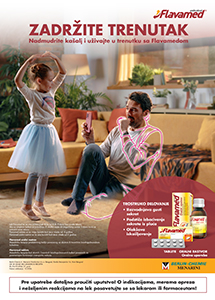IMMUNIZATION AGAINST HUMAN PAPILLOMA VIRUS IN BELGRADE COMMUNUTY
DOI:
https://doi.org/10.46793/PP231221013SKeywords:
Human papillomavirus, vaccination, preventionAbstract
Introduction: Infection with human papillomavirus (HPV) is one of the most common sexually transmitted infections. In an effort to prevent diseases caused by HPV, a 9-valent HPV vaccine has been available in Serbia since June 2022. It is recommended for children aged 9 to 19 years.
Objective: This study aimed to determine the number of children and adolescents vaccinated against HPV, to assess if there is a gender difference in the number of vaccinated children in the municipality of Belgrade, and to evaluate the percentage of children who started vaccination versus those fully vaccinated in the municipality of Čukarica.
Method: The study utilized periodic reports from the immunization representative of the “Dr Simo Milošević” Health Center as the data source.
Results: In the period from June 2022 to November 2023, a total of 19,839 vaccine doses were administered across the municipalities of Belgrade. In most health centers, a significantly higher percentage of girls began vaccination, with the exception of Barajevo Health Center (50% vaccinated boys) and Savski Venac Health Center (36% vaccinated boys).
Conclusion: For the analyzed 18-month period, we can conclude that the 7% vaccination rate recorded in the municipality of Čukarica is disappointingly low. Similarly, the 3% of children who received the second or third dose is also small, as it implies that nearly half of those who started the vaccination process have not been fully vaccinated.
References
Bruni L, Albero G, Serrano B, Mena M, Collado JJ, Gómez D et al. ICO/IARC Information Centre on HPV and Cancer (HPV Information Centre). Human Papillomavirus and Related Diseases in Serbia. Summary Report 10 March 2023. https://hpvcentre.net/statistics/reports/SRB.pdf Datum pristupa:18.12.2023.
Luria L, Cardoza-Favarato G. Human Papillomavirus. In: StatPearls, Treasure Island (FL): StatPearls Publishing; 2023 Jan 16
Condrat CE, Filip L, Gherghe M, Cretoiu D, Suciu N. Maternal HPV Infection: Effects on Pregnancy Outcome. Viruses 2021; Dec 7;13(12):2455
LaCour DE. Human Papillomavirus in Infants: Transmission, Prevalence, and Persistence. J Pediatr Adolesc Gynecol 2012; Apr;25(2):93–97.
Kamolratanakul S, Pitisuttithum P. Human Papillomavirus Vaccine Efficacy and Effectiveness against Cancer. Vaccines 2021; Nov 30;9(12):1413
Soliman M, Oredein O, Dass CR. Update on Safety and Efficacy of HPV Vaccines: Focus on Gardasil. Int J Mol Cell Med. 2021; Spring;10(2):101-113.
Schilling A, Macias Parra M, Gutierrez M, Restrepo J, Ucros S, Herrera T. et al. Coadministration of a 9-Valent Human Papillomavirus Vaccine With Meningococcal and Tdap Vaccines. Pediatrics. 2015; Sep;136(3):e563-72
Signorelli C, Odone A, Ciorba V, Cella P, Audisio RA, Lombardi A. et al. Human papillomavirus 9-valent vaccine for cancer prevention: a systematic review of the available evidence. Epidemiol Infect. 2017; Jul;145(10):1962–1982.
HPV. https://hpvinfo.rs/ Datum pristupa:18.12.2023.
Bonanni P, Bechini A, Donato R, Capei R, Sacco C, Levi M. Human papilloma virus vaccination: impact and recommendations across the world. The Adv Vaccines. 2015; Jan;3(1):3–12.
HPV Prevention Policy Atlas 2023, European Parliamentary Forum for Sexual and Reproductive Rights. https://www.epfweb.org/ Datum pristupa:18.12.2023.





